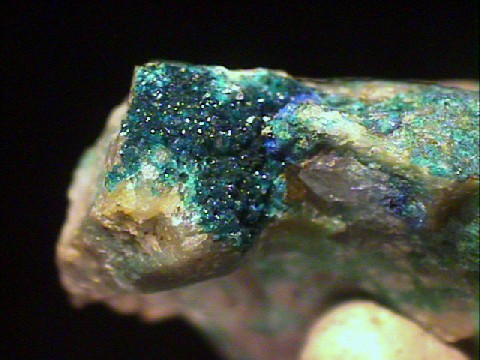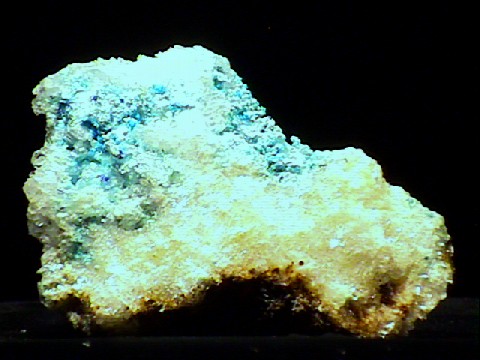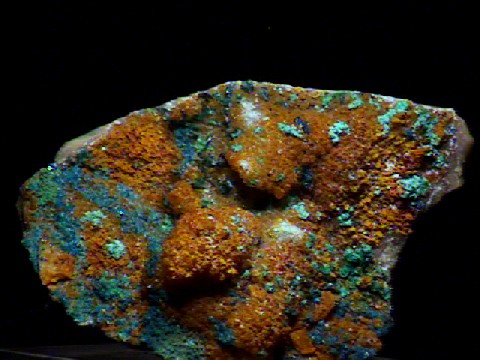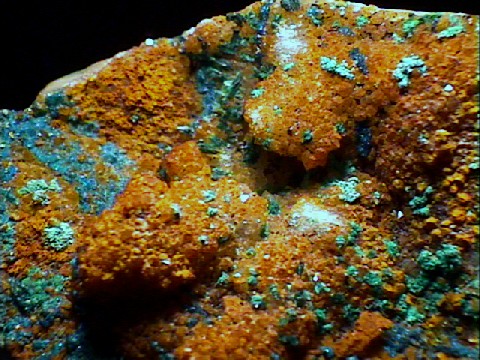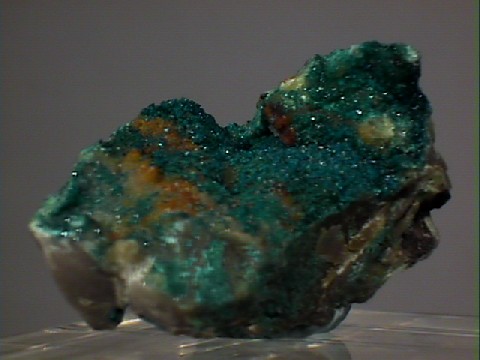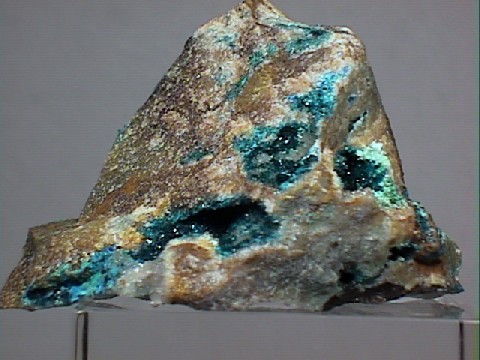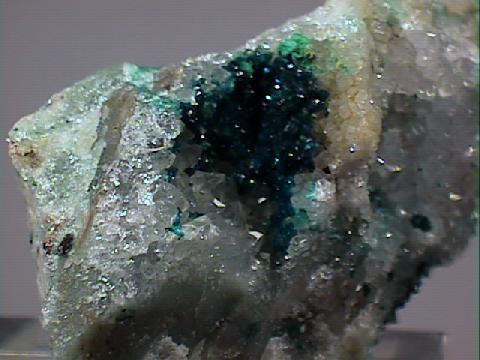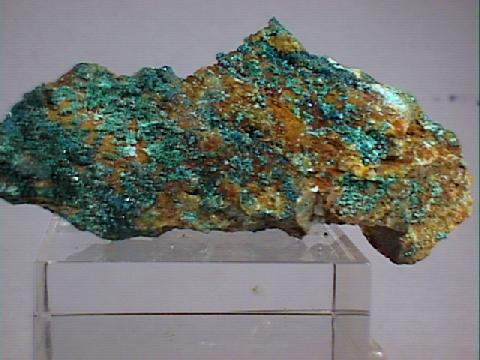 THE MINERAL SPANGOLITE
THE MINERAL SPANGOLITE
- Chemistry: Cu6Al(SO4)Cl(OH)12 - 3H2O, Hydrated Copper Aluminum Sulfate Chloride Hydroxide.
- Class: Sulfates.
- Uses: As a minor ore of copper and as mineral specimens.
Specimens
Spangolite is a beautiful mineral. It has a blue green color that is usually quite attractive. Its aggregate crystal clusters of tabular well formed crystals are very interesting and spangolite even forms small twinned crystals that have a look similar to the head of a double bladed hatchet. Spangolite's typical tabular habit is similar to the arsenate mineral chalcophyllite.
PHYSICAL CHARACTERISTICS:
- Color is blue-green; ranging from dark blue to emerald green.
- Luster is vitreous.
- Transparency: Specimens are transparent to translucent.
- Crystal System is hexagonal; 6mm.
- Crystal Habits include prismatic to tabular tapering crystals.
- Cleavage is perfect in one direction (basal).
- Fracture is conchoidal.
- Hardness is 3
- Specific Gravity is approximately 3.1 - 3.2 (average for non-metallic minerals).
- Streak is light green.
- Associated Minerals include
azurite,
cuprite,
claringbullite , connellite,paratacamite , atacamite, andchyrsocolla . - Notable Occurrences include St. Day,
Cornwall , England; Arenas, Sardinia;Larium , Greece; the type locality of either Tombstone or Bisbee, as well as the Copper Queen Mine and the Clifton-Morenci District of Arizona, and the Bingham and Blanchard Mine, Socorro County, New Mexico, USA. - Best Field Indicators are crystal habit, color, cleavage, associations and locality.


